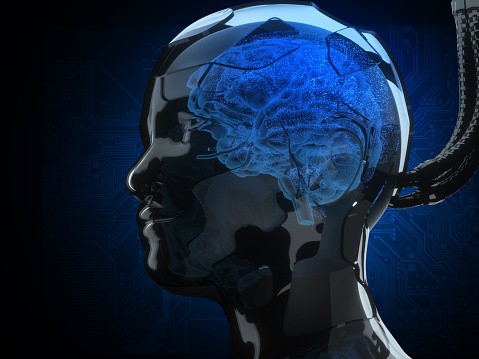
Scientists from China have created something akin to a Frankenstein robot by placing a small human brain in the device.
Frankenstein Robot
Scientists at Tianjin University have developed a machine that incorporates a brain-computer interface, bringing together electric signals released by the human brain with the computer chips. Led by Ming Dong, the team created a Frankenstein robot that works by using a lab-grown organoid - a mass of cells - and a computer chip interacting with the brain's nervous system.
This comes after Japanese scientists had grafted human skin tissue and skin-ligament structures onto the face of a robot to express human-like emotions. Scientists created a bizarre smiling robotic face with lab-grown human skin; a video shows this creation from the University of Tokyo.
A team in Japan has gone on record to say that robots with real skin won't just push the boundaries of an "appearance" that seems increasingly human; they will also heal themselves in case of damage.
Chinese scientists made a one-of-a-kind robot using stem cells to build its brain. Later, it was paired with a computer chip passing instructions to the body of the robot in a composition mix of human cells and computer chips to allow it to function like a human brain.
Pluripotent stem cells have been used as a form of cells in the early stage of embryonic development to develop the living machine. ' These pluripotent stem cells divide into different kinds of cells found in the brain, like tissues, and go on to form organoids.
The Chinese researchers have not shared how they transmit signals to their organoids. The team also did not reveal how they had trained the organoid to know when the robot should perform specific tasks.
Organoids represent small, self-organized, three-dimensional tissue cultures engineered from stem cells. The developed cultures can be designed to imitate most of the intricacies of an organ or express just certain factors, like the production of a few specific cell types.
After being grafted into the brian, they establish a functional connection upon the administration of a low-intensity ultrasound. such a type of stimulating regrows human tissues to form neurons that can send messages from the brain.
Brain organoid transplants are considered to be among the promising ways of restoring brian function. This is so because the approach replaces lost neurons and rebuilds the neural circuits.
How Does This Unique Robot Work?
Experts call it a 'brain on a chip,' and it will function the same way that the human brain does, with the aid of sensors and a self-contained algorithm that is fueled by artificial intelligence. This system will feel the need to move, pick up an object and avoid collision.
The research team added that the isolated brain indicates intelligence features similar to the human brain in that it moves its extremities autonomously. This feature could result in methods to be applied for repairing damage to a human's cerebral cortex and creating other approaches towards healing neurological disorders.
As experts explained, the robot does not have eyes, and it's just the electrical and sensory signals sent by neurons that the robot responds to. It was pointed out that the pink blob atop the shoulder of the robot is not actual tissue but a cosmetic representation of what the brain will look like and is still being used in prototypes.
The interface used in the study is similar to the system Elon Musk used to create the Neuralink chip, implanted in the brain of a human patient, allowing him to control a computer with his mind. Neuralink's device is powered by a custom chip inside the implant that processes signals and transmits them into a computer via a standard Bluetooth connection.
The research team said that the technology still suffered bottlenecks, including low maturity in development and inadequate supply of nutrients. This generally includes antioxidants, fibers, and minerals.
The discovery is still on a primary development level. It isn't obvious whether the organoids could later on be used to regain or rebuild damaged brain tissues.
RELATED ARTICLE : Human Cells Bioengineered To Make Self-Healing Skin Designed To Coat Surfaces, Cover Robot Faces
Check out more news and information on Robots in Science Times.
© 2026 ScienceTimes.com All rights reserved. Do not reproduce without permission. The window to the world of Science Times.










